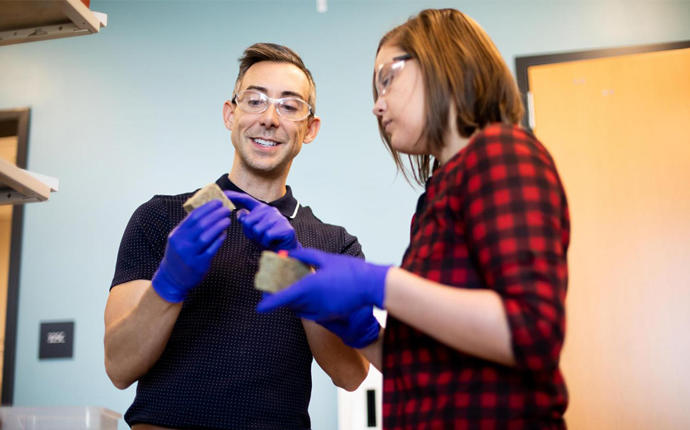Could this be the building block of real estate life on Mars?
Researchers at the University of Colorado have turned light-eating bacteria into the world’s tiniest construction workers, utilizing their power to create “living concrete.”
Their breakthrough process uses the bacteria in the same way binders are used in traditional concrete-making. The living concrete can be made from less materials and without the carbon dioxide emissions caused by traditional concrete methods, according to the New York Times.
The researchers first mixed cyanobacteria with warm water, sand and nutrients. The bacteria absorb light and produce calcium carbonate that bonds the sand together, just like binders, but that process was slow.
They were able to speed up the process and strengthen the bonds by adding common food gelatin and cooling the mixture in monds in a refrigerator, similar to the process of making Jell-O.
The mixture takes about two days to solidify and can be shaped into many different forms using molds. So far, they’ve made bricks about the size of a shoebox, as well as curved, truss-like blocks, and other shapes.
They strengthen at room temperature over several days and the bacteria start to die out during that time, but even weeks later they can be cut up and used to grow up to three generations of bricks.
The project was funded by DARPA, an experimental research arm of the Department of Defense. DARPA has funded numerous groundbreaking scientific and technological projects over the years. It wants to use the bricks to make it easier to build in remote environments.
The bacteria can also bind to a wide variety of materials, whereas conventional concrete can only be made from virgin sand, which is running short worldwide. Conventional bricks so far are stronger, but have practical limitations.
Dr. Wil Strubar, a structural engineer who headed the research project, said the possibilities were incredible. In the future, materials could detect and respond to toxic chemicals or even point to possible structural damage. They might even survive on Mars.
“There’s no way we’re going to carry building materials to space,” Dr. Srubar told the Times. “We’ll bring biology with us.” [NYT] — Dennis Lynch
